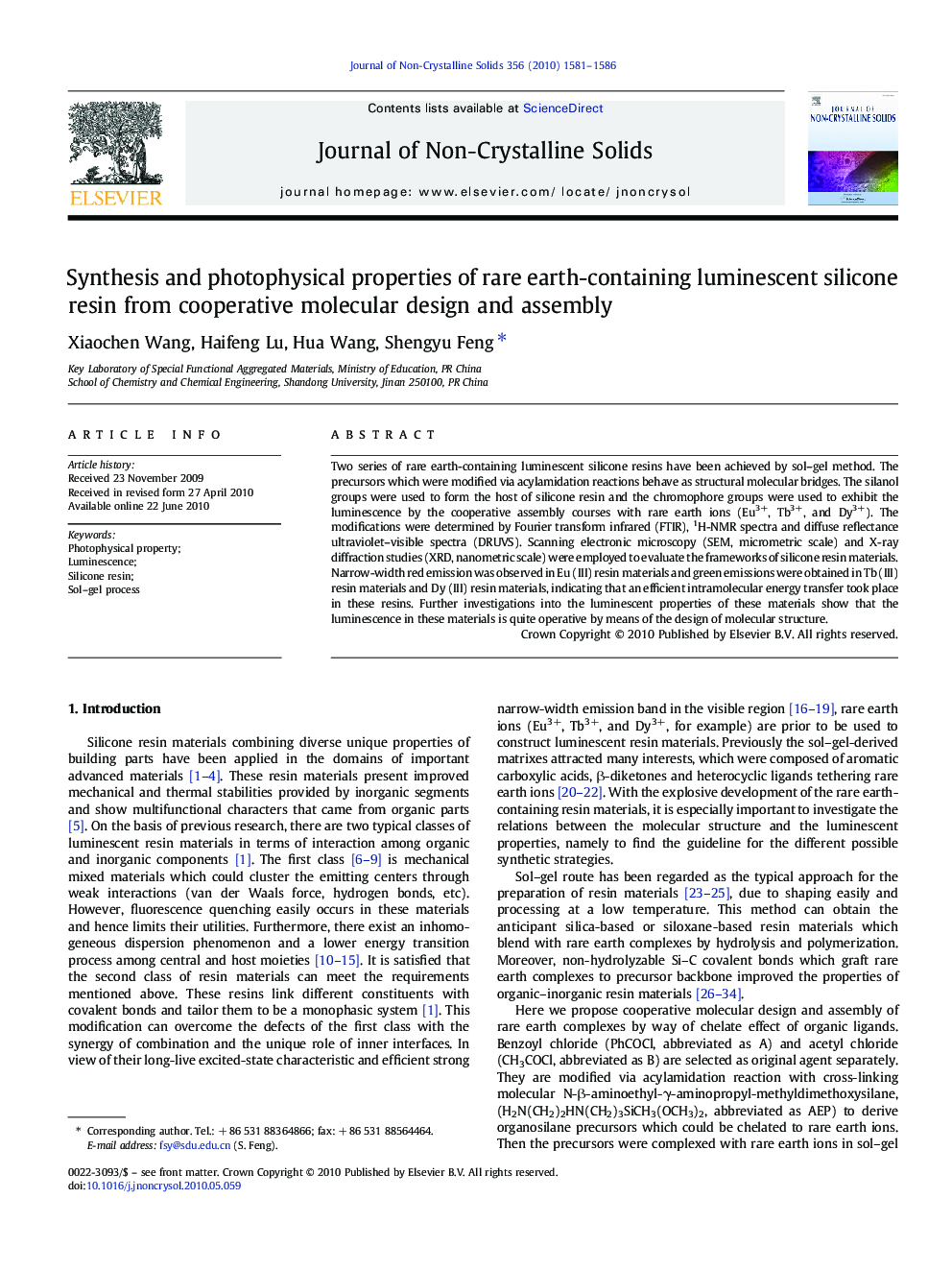| Article ID | Journal | Published Year | Pages | File Type |
|---|---|---|---|---|
| 1483264 | Journal of Non-Crystalline Solids | 2010 | 6 Pages |
Two series of rare earth-containing luminescent silicone resins have been achieved by sol–gel method. The precursors which were modified via acylamidation reactions behave as structural molecular bridges. The silanol groups were used to form the host of silicone resin and the chromophore groups were used to exhibit the luminescence by the cooperative assembly courses with rare earth ions (Eu3+, Tb3+, and Dy3+). The modifications were determined by Fourier transform infrared (FTIR), 1H-NMR spectra and diffuse reflectance ultraviolet–visible spectra (DRUVS). Scanning electronic microscopy (SEM, micrometric scale) and X-ray diffraction studies (XRD, nanometric scale) were employed to evaluate the frameworks of silicone resin materials. Narrow-width red emission was observed in Eu (III) resin materials and green emissions were obtained in Tb (III) resin materials and Dy (III) resin materials, indicating that an efficient intramolecular energy transfer took place in these resins. Further investigations into the luminescent properties of these materials show that the luminescence in these materials is quite operative by means of the design of molecular structure.
